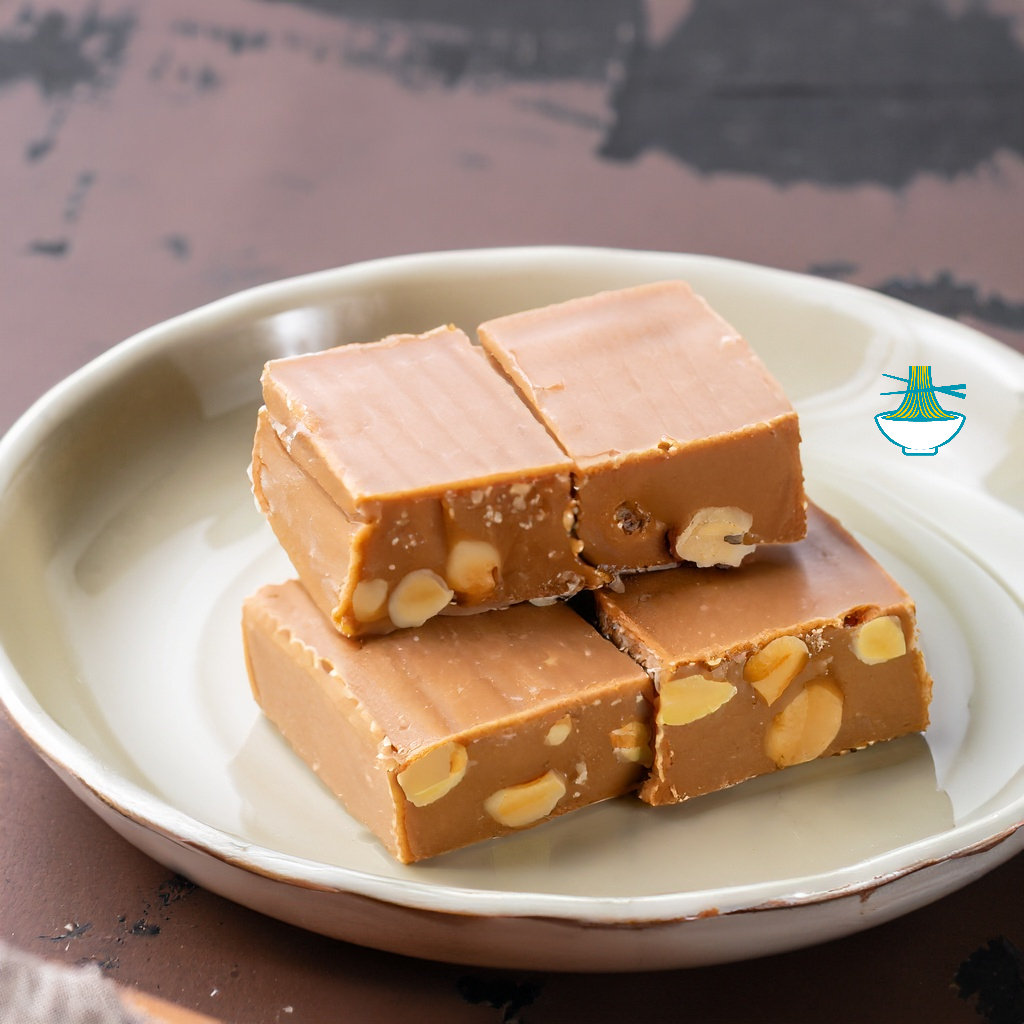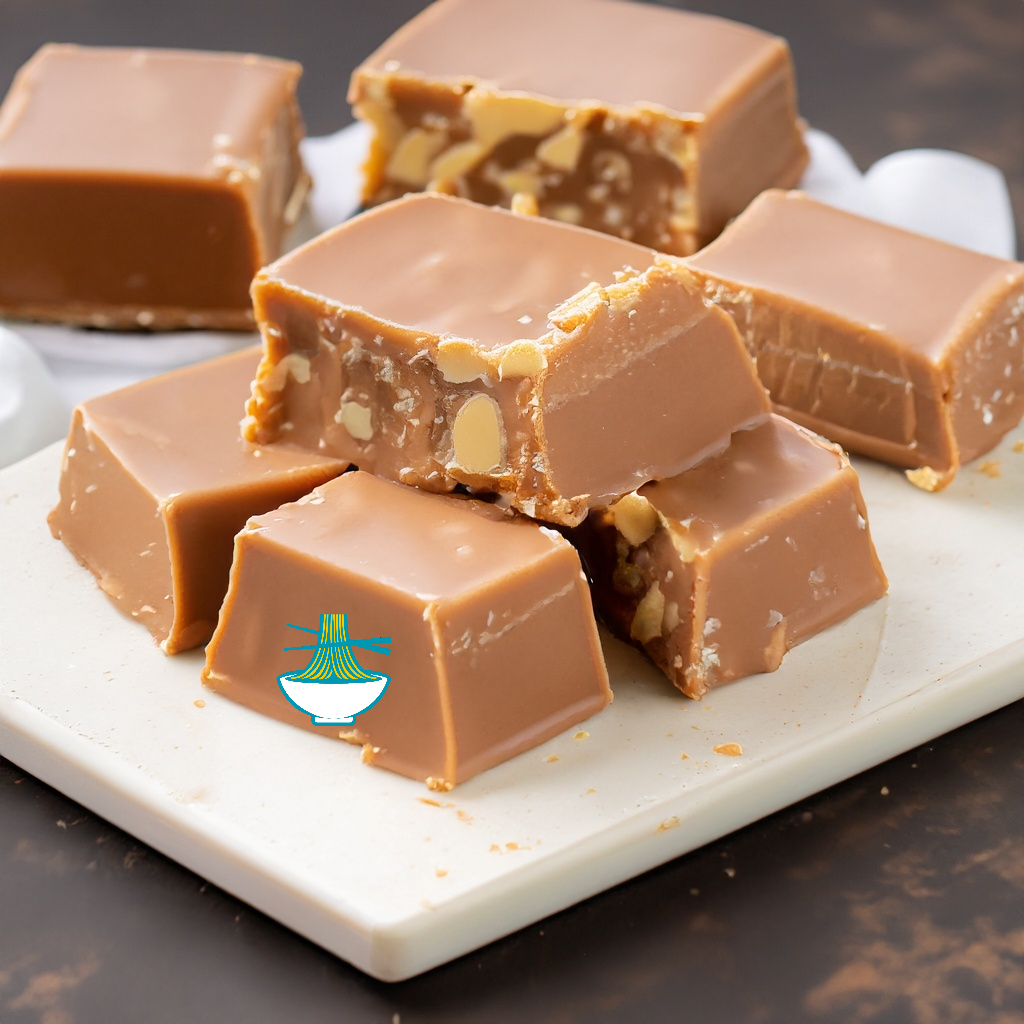Classic American fudge is a beloved confection made from sugar, butter, milk, and flavorings, offering a smooth, creamy texture. With variations like chocolate, vanilla, and peanut butter, fudge has been a staple in American candy since the late 19th century. While it is a popular treat for holidays and special occasions, it is important to enjoy it in moderation due to its high sugar and calorie content. Fudge provides quick energy but lacks significant nutritional value, offering minimal vitamins and minerals. Though delicious, its rich ingredients can be detrimental to health when consumed excessively, leading to potential weight gain or blood sugar spikes. Proper storage in an airtight container can keep fudge fresh for up to two weeks, and freezing extends its shelf life for up to three months.
Ingredients:
1- 2 cups granulated sugar
2- 1 cup unsalted butter
3- 3/4 cup whole milk
4- 1/4 cup cocoa powder (for chocolate fudge)
5- 1 tsp vanilla extract
6- Pinch of salt
Healthy Alternatives:
Can fudge be made with healthier ingredients?
- For those looking to make their fudge healthier, several alternatives can be used in place of traditional ingredients. Natural sweeteners such as stevia, erythritol, or monk fruit can replace refined sugar, reducing the calorie and sugar content. Additionally, healthier fat sources like coconut oil or avocado can replace butter, providing beneficial fats that support heart health. You can also experiment with dark chocolate, which contains higher levels of cocoa and antioxidants, providing additional health benefits.
Instructions:
1- Grease an 8-inch square baking dish with butter or cooking spray and set aside.
2- In a medium-sized saucepan, combine the sugar, butter, and milk over medium heat. Stir until the sugar dissolves.
3- Bring the mixture to a boil and let it boil for 5-7 minutes without stirring. Use a candy thermometer to check that the temperature has reached 235-240°F (soft ball stage).
4- Remove the pan from heat and let it cool for 1-2 minutes.
5- Add the cocoa powder (if making chocolate fudge), vanilla extract, and a pinch of salt. Stir until well combined.
6- Use a hand mixer or whisk to beat the mixture vigorously for 5-10 minutes, until it thickens and becomes shiny. This step is important for achieving a smooth and creamy texture.
7- Pour the mixture into the prepared baking dish and smooth the top with a spatula.
8- Let the fudge cool at room temperature for at least 2 hours, or until firm.
9- Cut the fudge into squares using a sharp knife and serve.
Notes:
1- Be careful when boiling the mixture as it can become very hot and may splatter.
2- It is important to use a candy thermometer to ensure that the mixture reaches the correct temperature for the fudge to set properly.
3- For best results, use high-quality ingredients and measure them accurately.
4- You can customize the flavor of your fudge by adding different extracts or mix-ins such as nuts or candy.
Improved Mental Health with Fudge:
What health benefits can my body gain from eating fudge?
- Fudge, especially when made with cocoa, can have positive effects on mood. Cocoa is rich in flavonoids, compounds that have been shown to promote brain health and improve mood. Theobromine and phenylethylamine, natural compounds found in cocoa, help boost endorphin levels in the brain, contributing to feelings of happiness and well-being. Enjoying a small piece of fudge can therefore provide a brief emotional lift, making it a comforting treat. However, it’s important to consume it in moderation to avoid excess sugar intake, which can have negative effects on overall health.
Health Warnings:
- While fudge is a delicious treat, it’s important to be mindful of its high sugar and calorie content. Excessive sugar consumption can lead to weight gain, increased risk of heart disease, and may cause spikes in blood sugar levels, particularly for individuals with diabetes. People with insulin resistance or those monitoring their blood sugar should be cautious when consuming fudge. It's always best to enjoy it as an occasional indulgence rather than a regular part of the diet.
Storage Tips for Fudge:
What are the best methods for storing fudge?
- To keep fudge fresh for longer, store it in an airtight container. At room temperature, it can stay fresh for up to one week. If you want to extend its shelf life, refrigerate it for up to two weeks. For longer storage, fudge can be frozen for up to three months. When ready to enjoy, simply let it come to room temperature before serving.
Frequently Asked Questions:
Can I use alternative sweeteners to make fudge?
- Yes, you can use natural sweeteners such as stevia, erythritol, or monk fruit as substitutes for sugar in the recipe. These alternatives can help reduce the sugar content while maintaining the sweetness of the fudge.
Nutrition Value:
1. 2 cups granulated sugar
- Calories: 1,560
- Carbohydrates: 400g
- Protein: 0g
- Fat: 0g
- Sodium: 0mg
- Cholesterol: 0mg
- Vitamins: None
- Minerals: None
Nutritional Benefits:
Sugar is a quick source of energy since it is a simple carbohydrate that the body can easily convert into glucose for fuel. However, it provides little to no vitamins or minerals, so it should be consumed in moderation.
2. 1 cup unsalted butter
- Calories: 1,628
- Carbohydrates: 0g
- Protein: 2g
- Fat: 184g
- Sodium: 2mg
- Cholesterol: 35mg
- Vitamins:
- Vitamin A: 1,080 IU (22% DV)
- Vitamin D: 45 IU (11% DV)
- Vitamin E: 0.2 mg (1% DV)
- Minerals:
- Calcium: 10mg
- Phosphorus: 10mg
- Potassium: 31mg
Nutritional Benefits:
Butter is rich in fat, particularly saturated fat, and provides essential fatty acids that support brain health and cellular function. It also contains fat-soluble vitamins A and D, which are essential for vision, immune function, and bone health.
3. 3/4 cup whole milk
- Calories: 152
- Carbohydrates: 11.9g
- Protein: 8g
- Fat: 7.9g
- Sodium: 98mg
- Cholesterol: 24mg
- Vitamins:
- Vitamin A: 400 IU (8% DV)
- Vitamin D: 120 IU (30% DV)
- Vitamin B12: 1.2mcg (20% DV)
- Riboflavin (Vitamin B2): 0.3mg (18% DV)
- Minerals:
- Calcium: 276mg (28% DV)
- Phosphorus: 222mg (22% DV)
- Potassium: 300mg (9% DV)
Nutritional Benefits:
Whole milk is an excellent source of calcium and protein, important for bone health and muscle repair. It also provides vitamin D, essential for calcium absorption, and vitamin B12, which supports nerve function and red blood cell production.
4. 1/4 cup cocoa powder (for chocolate fudge)
- Calories: 60
- Carbohydrates: 12g
- Protein: 4g
- Fat: 1.5g
- Sodium: 5mg
- Cholesterol: 0mg
- Vitamins:
- Vitamin A: 0 IU
- Vitamin C: 0mg
- Vitamin K: 0.2mcg
- Minerals:
- Magnesium: 64mg (16% DV)
- Iron: 1.8mg (10% DV)
- Potassium: 176mg (5% DV)
- Zinc: 0.7mg (5% DV)
Nutritional Benefits:
Cocoa powder is rich in antioxidants, particularly flavonoids, which may help reduce inflammation and improve heart health. It also provides minerals such as magnesium, iron, and zinc, which are vital for muscle function, oxygen transport, and immune support.
5. 1 tsp vanilla extract
- Calories: 12
- Carbohydrates: 0.6g
- Protein: 0g
- Fat: 0g
- Sodium: 0mg
- Cholesterol: 0mg
- Vitamins:
- Small amounts of antioxidants, such as vanillin.
- Minerals: None
Nutritional Benefits:
Vanilla extract is known for its antioxidant properties, particularly from vanillin, which may help protect cells from oxidative stress. It also enhances the flavor of the fudge without adding significant calories or nutrients.
6. Pinch of salt
- Calories: 0
- Carbohydrates: 0g
- Protein: 0g
- Fat: 0g
- Sodium: 0.5g (500mg per gram of salt, so a pinch is approximately 0.1g)
- Cholesterol: 0mg
- Vitamins: None
- Minerals:
- Sodium: 0.5g
Nutritional Benefits:
Salt helps balance sweetness and enhances the flavors of other ingredients. It also provides sodium, which is essential for maintaining fluid balance, nerve function, and muscle contraction. However, excessive salt consumption should be monitored, especially for those with high blood pressure.
Each ingredient in the recipe contributes unique nutritional elements, with sugar providing quick energy, butter and milk offering fats and essential vitamins, cocoa powder adding antioxidants and minerals, vanilla enhancing flavor with antioxidants, and salt ensuring the right flavor balance. However, it’s important to remember that consuming these ingredients in large quantities, particularly the sugar and butter, can have negative effects on health.


Comments